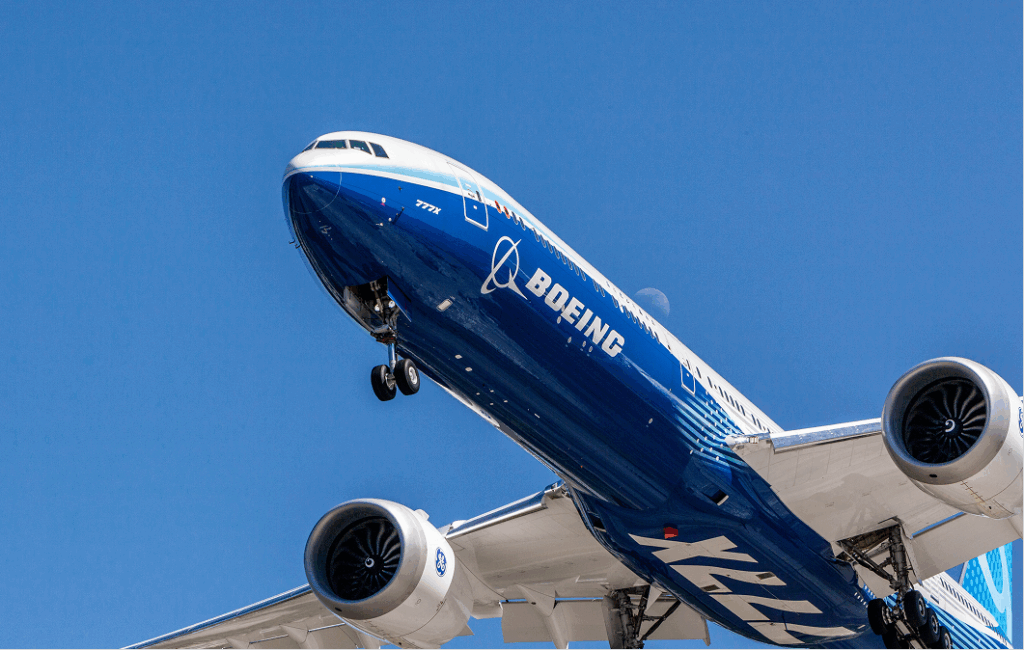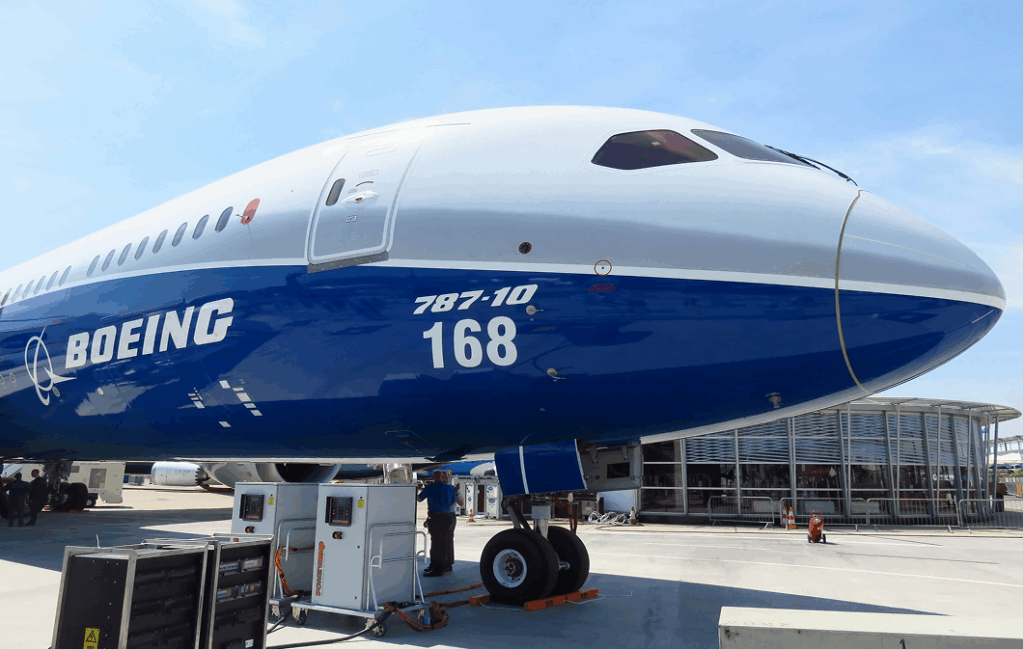Boeing has developed a wide range of aircraft that have shaped the history of aviation. If you’re wondering what types of Boeing aircraft exist, the answer includes everything from classic models like the 707 to the most modern ones like the 787 Dreamliner.
They cover the commercial, military, and space sectors. This guide will help you discover Boeing’s main models, their evolution, and their most notable features. From the largest Boeing aircraft to the most advanced, each plays a key role in the industry.
Boeing’s history began in 1916 with the production of seaplanes for World War I. In its early decades, Boeing developed models such as the B&W and the Model 40, pioneers in commercial aviation. These laid the foundation for future aircraft types. Although Boeing Defence Space & Security did not yet exist, the company was already showing interest in military applications. These early Boeing models are essential to understanding its evolution.
During the 1960s, Boeing launched some of its most iconic models: the 707, 727, and 737. These aircraft revolutionized commercial air transport. The 737, still in production, is one of the best-selling Boeing commercial aircraft. This period established the company as a leader in aviation and laid the groundwork for the development of the most modern Boeing aircraft.
The Boeing 747, known as the “Jumbo”, marked a milestone in Boeing’s history. It was the largest aircraft for decades and remains one of the most recognizable commercial airplanes in the world. Its double-deck design and high passenger capacity made it a symbol of innovation. This model is part of the most influential Boeing aircraft types, and its legacy continues through variants like the 747-8.
The Boeing 777 and 787 models represent a new era of efficiency and technology. The 777 is ideal for long-haul flights, while the 787 Dreamliner is considered the most modern Boeing aircraft. Both are commercial airplanes known for low fuel consumption and passenger comfort. These Boeing models reflect a strong commitment to sustainability. Additionally, the 787 competes to be the largest Boeing aircraft in its category.
Boeing has developed a wide range of commercial aircraft that have defined modern aviation. Among the most representative models are the 707, 737, 747, 777, and the 787 Dreamliner. These aircraft types have been used by airlines around the world, standing out for their reliability, capacity, and efficiency. The evolution of these models reflects the company’s constant innovation.
If you’re wondering what models exist, this section offers a clear overview of the most relevant ones. Some of them, like the 747, have been considered the largest aircraft in their category.
The Boeing 707 was the company’s first commercial jet aircraft, marking the beginning of the modern aviation era. This model revolutionized transatlantic flights and positioned the company as an industry leader. Although it is now retired, it remains an essential part of the history of the most influential models. Its design served as the foundation for later Boeing aircraft types. The 707 is a clear example of how the brand’s global expansion began.
Designed for medium-range routes, the Boeing 727 was one of the most popular models in the 1970s and 1980s. Its three-engine configuration made it ideal for airports with short runways. This type of aircraft was widely used in America and Europe, strengthening the brand’s presence in the market. Although it is no longer manufactured, it remains part of commercial aviation history. Its legacy continues in more modern designs.
The 737 is the best-selling model in the history of commercial aviation, with thousands of units operating worldwide. This type of aircraft stands out for its versatility, efficiency, and adaptability to short and medium-haul routes. At Global Training Aviation (GTA), the Boeing 737 is one of the most used models in flight simulators, and we offer type ratings for this aircraft, aimed at pilots seeking to specialize in operations with next-generation airplanes. This Boeing model has had multiple versions, from the 737-100 to the 737 MAX. Its evolution makes it one of the most representative models of modern aviation.
Known as the “Jumbo”, the 747 was for decades the largest aircraft in the world. Its double-deck design and high capacity made it an icon among commercial models. This type of aircraft was key to the expansion of international tourism. Although it has been replaced by more efficient models, it remains part of aviation history. The Boeing 747 represents the power of engineering applied to air transport.
The Boeing 757 was designed to replace the 727, offering greater range and capacity. This commercial model stood out for its performance on transcontinental routes. Although its production ended in 2004, it still operates in several airlines. It is part of the aircraft types that marked a transition toward more efficient designs. Its legacy is reflected in the development of models like the 737 and the 767. It also contributed to the diversification of the product range.
The Boeing 767 is a wide-body aircraft ideal for long-haul flights. Its design improved efficiency on intercontinental routes. This commercial model has been used by both airlines and cargo operators. It is part of the aircraft types that have evolved into more modern versions. Its versatility keeps it relevant in today’s market. Additionally, it has served as a foundation for developments in the military and logistics sectors.
The Boeing 777 is one of the most advanced models in terms of technology and performance. With capacity for over 300 passengers, it is considered one of the largest Boeing aircraft in operation. This type of aircraft has been key to the expansion of long-haul routes. Its aerodynamic design and efficient engines make it a benchmark. Additionally, it has influenced the development of the 787, the company’s most modern aircraft.
The Boeing 787 Dreamliner represents the pinnacle of innovation in commercial aviation. This modern model stands out for its energy efficiency, comfort, and advanced technology. It is considered the most modern Boeing and one of the most sustainable. Its use of composite materials makes it lighter and more resistant. This type of aircraft has redefined industry standards. Additionally, it competes with the 777 to be the largest aircraft in its category.
In addition to its renowned commercial aircraft, Boeing develops advanced solutions in defense, space, and global services. The Boeing Defence Space & Security division leads strategic projects in military aviation and space exploration. These programs complement the commercial models and demonstrate the company’s versatility. If you’re wondering what types of aircraft exist, here you’ll find a broader view beyond civil transport. GTA closely follows these innovations to adapt its training programs to the sector’s new demands.
Boeing’s military aviation division includes models like the F/A-18 Super Hornet and the KC-46 Pegasus, designed for tactical and logistical missions. These aircraft types stand out for their advanced technology and operational capability. Boeing Defence Space & Security leads the development of these aircraft, which are part of the defense strategy of multiple countries. Although they are not commercial airplanes, their impact on the industry is significant.
Under the Defence Space & Security division, Boeing participates in space projects such as the Starliner and satellite communication systems. These initiatives go beyond traditional models and position the company as a leader in aerospace innovation. The focus on defense includes unmanned systems and integrated solutions for global security. Although these are not commercial Boeing aircraft, their development influences the technological evolution of the sector.
Boeing’s global services include maintenance, training, simulation, and technical support for operators worldwide. This area complements the manufacturing of commercial and military models by offering comprehensive solutions. GTA collaborates in this field through training programs and type ratings, especially with full flight simulators. These services help extend the operational life of aircraft types and improve efficiency. Boeing’s global vision is reflected in its commitment to excellence at every stage of the aviation lifecycle.


Currently, there are numerous types of Boeing aircraft, both in the commercial, military, and space sectors. From the 707 to the 787, each model meets specific needs in range, capacity, and technology. Additionally, the Boeing Defence Space & Security division expands this variety with tactical aircraft and space systems. If you’re wondering how many types of aircraft there are, the answer includes more than a dozen active variants.
The largest Boeing aircraft in commercial operation is the 777-9, which surpasses the 787 in length and passenger capacity. However, the 787 Dreamliner stands out for its advanced technology and energy efficiency. Both Boeing models are designed for long-haul flights, but the 777 offers greater volume and range. If we compare these aircraft types, the 777 wins in size, while the 787 leads in innovation. GTA offers specialized training on both models, including type ratings.
The most modern Boeing aircraft is the 787 Dreamliner, a plane that incorporates composite materials, digital systems, and next-generation engines. This commercial model has redefined standards of comfort and sustainability in aviation. Although Boeing is working on new developments, the 787 remains the current benchmark in innovation. If you’re wondering which models are at the technological forefront, the Dreamliner is the answer. At GTA, this aircraft is part of our simulators and advanced training programs.
The Boeing 777 remains one of the most widely used aircraft for intercontinental flights, especially in its 777-300ER version. Although it has been partially overshadowed by the 787, the 777 continues in production with the new 777X variant. This commercial model combines capacity, range, and efficiency, maintaining its relevance in the market. If you’re wondering what happened to this aircraft, the answer is evolution, not disappearance. GTA continues to offer type ratings for the 777, reflecting its operational significance.